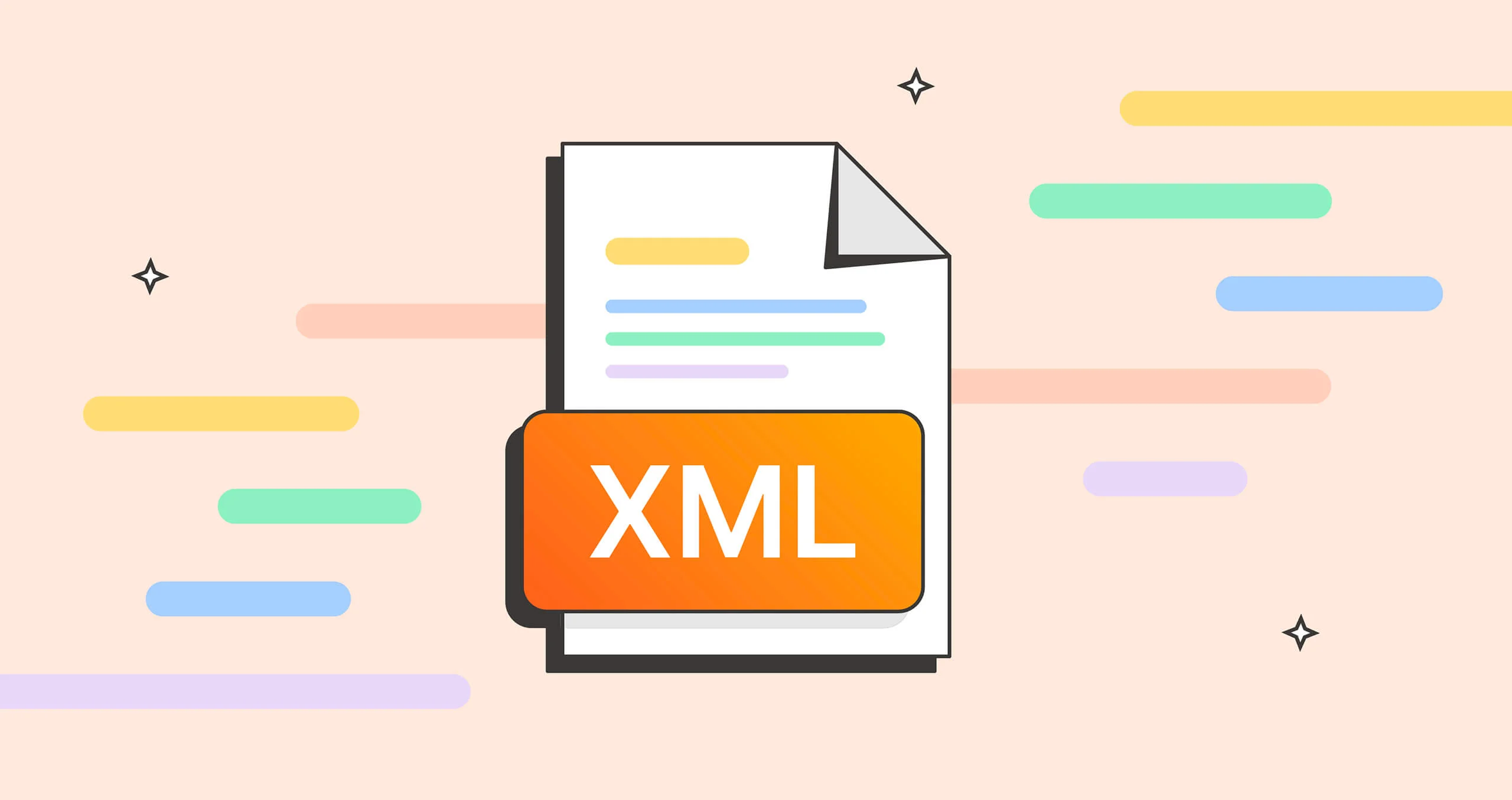A Practical Guide to XML Digital Signatures (XMLDSig)
Jul 26, 2025 am 02:07 AMXML Digital Signatures (XMLDSig) are a W3C standard for securing XML content by ensuring integrity, authentication, and non-repudiation through public key cryptography. 1. The signature structure includes

XML Digital Signatures (XMLDSig) are a W3C standard for applying digital signatures to XML documents. Unlike traditional binary signatures, XMLDSig allows for signing specific parts of an XML document, supports multiple signing algorithms, and enables verification while preserving the structure and readability of the original data. This makes it especially useful in web services, SAML, SOAP, and other XML-based protocols.

Here’s a practical guide to help you understand and implement XMLDSig effectively.
What Is XML Digital Signature?
XMLDSig is a method to ensure the integrity, authentication, and non-repudiation of XML content. It uses public key cryptography to sign XML data and embed the signature within or alongside the document.

Key components of an XML signature include:
-
<signedinfo></signedinfo>: Contains the core data to be signed, including references, canonicalization method, and signature method. -
<signaturevalue></signaturevalue>: The actual digital signature, computed over the serializedSignedInfo. -
<keyinfo></keyinfo>(optional): Provides information about the public key needed to verify the signature. -
<reference></reference>: Points to the data being signed, which can be inside or outside the document.
Example:
<Signature xmlns="http://www.w3.org/2000/09/xmldsig#">
<SignedInfo>
<CanonicalizationMethod Algorithm="http://www.w3.org/TR/2001/REC-xml-c14n-20010315"/>
<SignatureMethod Algorithm="http://www.w3.org/2000/09/xmldsig#rsa-sha1"/>
<Reference URI="#data">
<DigestMethod Algorithm="http://www.w3.org/2000/09/xmldsig#sha1"/>
<DigestValue>abc123...</DigestValue>
</Reference>
</SignedInfo>
<SignatureValue>xyz789...</SignatureValue>
<KeyInfo>
<X509Data>
<X509Certificate>...</X509Certificate>
</X509Data>
</KeyInfo>
</Signature>Types of XML Signatures
There are three main types, depending on how the signature relates to the data:
Enveloped Signature
- The signature is embedded inside the XML document it signs.
- Most common in SOAP and SAML assertions.
- Requires careful canonicalization to avoid invalidating the signature when the signature itself changes.
Enveloping Signature
- The signed data is embedded inside the
<Signature>element. - Useful when packaging small payloads with their signature.
- The signed data is embedded inside the
Detached Signature
- The signature is stored separately from the data.
- Often used when signing entire files or external resources.
- The
URIattribute in<Reference>points to the external data.
Choosing the right type depends on your integration needs and data structure.
Step-by-Step Signing Process
To create a valid XML signature, follow these steps:
- Select what to sign: Decide whether to sign the entire document or just a portion (e.g., a specific element).
- Add a unique ID attribute: Ensure the target element has an
Idattribute (e.g.,Id="data") so it can be referenced. - Canonicalize the data: Use a canonicalization algorithm (like
c14n) to normalize the XML, ensuring consistent byte representation. - Compute digest: Hash each referenced resource using the specified digest method (e.g., SHA-1 or SHA-256).
- Build
<SignedInfo>: Assemble all references, canonicalization, and signature methods. - Sign
<SignedInfo>: Serialize the<SignedInfo>element and sign it with the private key. - Base64-encode the resulting signature and place it in
<SignatureValue>. - Include key info (optional): Add
<KeyInfo>to help the recipient verify the signature.
? Security Tip: Avoid using SHA-1 and RSA-SHA1 today. Prefer SHA-256 or better, and use algorithms like
rsa-sha256.
Verification: How to Validate a Signature
To verify an XML signature:
- Extract the
<SignedInfo>element and canonicalize it (using the method specified). - Recompute the digest for each
<Reference>:- Retrieve the referenced data.
- Apply the same canonicalization and hashing.
- Compare with the
<DigestValue>in the signature.
- Verify the
<SignatureValue>using the public key against the serialized<SignedInfo>. - Confirm the key trust (e.g., via X.509 certificate chain validation).
If any step fails — mismatched digest, invalid signature, or untrusted key — the verification fails.
?? Watch out for insecure canonicalization or relative URI attacks where attackers manipulate what gets signed.
Common Pitfalls and Best Practices
Always use proper canonicalization
XML is whitespace-sensitive and allows equivalent forms (e.g., attribute order). Usehttp://www.w3.org/2001/10/xml-exc-c14n#(exclusive c14n) to avoid surprises.Avoid signing without
Idattributes
Make sure referenced elements have a validIdand that theURIin<Reference>matches (e.g.,URI="#mydata").Prefer explicit key distribution
Don’t rely solely on<KeyInfo>. In secure systems, exchange public keys out of band or via PKI.Use strong algorithms
Avoid deprecated ones likeSHA1andMD5. Use:- Digest:
http://www.w3.org/2001/04/xmlenc#sha256 - Signature:
http://www.w3.org/2001/04/xmldsig-more#rsa-sha256
- Digest:
Validate before processing
Never trust XML content until the signature is fully verified — especially in SAML or API gateways.
Tools and Libraries
You don’t need to implement XMLDSig from scratch. Use trusted libraries:
- Java: Apache Santuario (
org.apache.santuario:xmlsec) - .NET:
SignedXmlclass inSystem.Security.Cryptography.Xml - Python:
signxmllibrary (supports XMLDSig well) - Node.js:
xml-cryptopackage
Example (Python with signxml):
from signxml import XMLSigner
import xml.etree.ElementTree as ET
data = ET.Element("Data")
data.set("Id", "data")
data.text = "Hello, signed world!"
signed_data = XMLSigner().sign(data, reference_uri="data")Basically, XMLDSig gives you fine-grained, interoperable digital signatures for XML — but only if used carefully. Pay attention to canonicalization, algorithm choices, and verification logic. Once set up correctly, it's a robust way to secure data in enterprise and identity systems.
The above is the detailed content of A Practical Guide to XML Digital Signatures (XMLDSig). For more information, please follow other related articles on the PHP Chinese website!

Hot AI Tools

Undress AI Tool
Undress images for free

Undresser.AI Undress
AI-powered app for creating realistic nude photos

AI Clothes Remover
Online AI tool for removing clothes from photos.

Clothoff.io
AI clothes remover

Video Face Swap
Swap faces in any video effortlessly with our completely free AI face swap tool!

Hot Article

Hot Tools

Notepad++7.3.1
Easy-to-use and free code editor

SublimeText3 Chinese version
Chinese version, very easy to use

Zend Studio 13.0.1
Powerful PHP integrated development environment

Dreamweaver CS6
Visual web development tools

SublimeText3 Mac version
God-level code editing software (SublimeText3)

Hot Topics
 Why XML Is Still Relevant: Exploring Its Strengths for Data Exchange
Jul 05, 2025 am 12:17 AM
Why XML Is Still Relevant: Exploring Its Strengths for Data Exchange
Jul 05, 2025 am 12:17 AM
XMLremainsrelevantduetoitsstructuredandself-describingnature.Itexcelsinindustriesrequiringprecisionandclarity,supportscustomtagsandschemas,andintegratesdatavianamespaces,thoughitcanbeverboseandresource-intensive.
 XML Basic Rules: Ensuring Well-Formed and Valid XML
Jul 06, 2025 am 12:59 AM
XML Basic Rules: Ensuring Well-Formed and Valid XML
Jul 06, 2025 am 12:59 AM
XMLmustbewell-formedandvalid:1)Well-formedXMLfollowsbasicsyntacticruleslikeproperlynestedandclosedtags.2)ValidXMLadherestospecificrulesdefinedbyDTDsorXMLSchema,ensuringdataintegrityandconsistencyacrossapplications.
 XML in Software Development: Use Cases and Reasons for Adoption
Jul 10, 2025 pm 12:14 PM
XML in Software Development: Use Cases and Reasons for Adoption
Jul 10, 2025 pm 12:14 PM
XMLischosenoverotherformatsduetoitsflexibility,human-readability,androbustecosystem.1)Itexcelsindataexchangeandconfiguration.2)It'splatform-independent,supportingintegrationacrossdifferentsystemsandlanguages.3)XML'sschemavalidationensuresdataintegrit
 XML: Why are namespaces needed?
Jul 07, 2025 am 12:29 AM
XML: Why are namespaces needed?
Jul 07, 2025 am 12:29 AM
XMLnamespacesareessentialforavoidingnamingconflictsinXMLdocuments.Theyuniquelyidentifyelementsandattributes,allowingdifferentpartsofanXMLdocumenttocoexistwithoutissues:1)NamespacesuseURIsasuniqueidentifiers,2)Consistentprefixusageimprovesreadability,
 The Ultimate Guide to XML Schema: Creating Valid and Reliable XML
Jul 08, 2025 am 12:09 AM
The Ultimate Guide to XML Schema: Creating Valid and Reliable XML
Jul 08, 2025 am 12:09 AM
XMLSchemacanbeeffectivelyusedtocreatevalidandreliableXMLbyfollowingthesesteps:1)DefinethestructureanddatatypesofXMLelements,2)Userestrictionsandfacetsfordatavalidation,3)Implementcomplextypesandinheritanceformanagingcomplexity,4)Modularizeschemastoim
 The Key Characteristics of a Well-Formed XML Document
Jul 12, 2025 am 01:22 AM
The Key Characteristics of a Well-Formed XML Document
Jul 12, 2025 am 01:22 AM
Awell-formedXMLdocumentadherestospecificrulesensuringcorrectstructureandparseability.1)Itstartswithaproperdeclarationlike.2)Elementsmustbecorrectlynestedwitheachopeningtaghavingacorrespondingclosingtag.3)Attributesmustbeuniquewithintheirelementandenc
 XML Schema: Ensuring Data Integrity in XML Documents
Jul 12, 2025 am 12:39 AM
XML Schema: Ensuring Data Integrity in XML Documents
Jul 12, 2025 am 12:39 AM
XMLSchemaensuresdataintegrityinXMLdocumentsbydefiningstructureandenforcingrules.1)Itactsasablueprint,preventingdatainconsistencies.2)Itvalidatesdataformats,likeensuringISBNsare10or13digits.3)Itenforcescomplexrules,suchasrequiringacovermaterialforhard
 XML writing rules: a simple guide
Jul 06, 2025 am 12:20 AM
XML writing rules: a simple guide
Jul 06, 2025 am 12:20 AM
ThekeyrulesforwritingXMLare:1)XMLdocumentsmusthavearootelement,2)everyopeningtagneedsaclosingtag,and3)tagsarecase-sensitive.Additionally,useattributesformetadataoruniqueidentifiers,andelementsfordatathatmightneedtobeextendedorchanged,aselementsofferm






